#louis i d'orléans
Text
The Maid was born inside the borders of the kingdom since the Meuse river traditionally separates France from the Empire. "If you search for her nation, she is of the kingdom, if you search for her country, she is from Vaucouleurs." Domrémy is divided in two feudal obediences, part of the village being directly in the kingdom, the other, where Jeanne's house is, is attached to the Barrois mouvant. But during Jeanne's childhood the village is mostly torn between the rival ambitions of two political parties. The Valois Duke of Burgundy rules over the countries of here (the duchy) as well as over the countries of there (Flanders) and the strategic road which links them crosses the Meuse Valley. Louis of Orleans, count of Porcien and Valois, advances his pawns in the region in order to cut the States of his adversary in two, and has been trying to unite Lorraine to the kingdom. Metz or Neufchâteau go under a royal safekeeping ensured by Orleans troops.

Jeanne's father is an Armagnac notable. The Maid's childhood is scarred by lootings from Burgundian troops, which really scared her. Jeanne denies any paternal influence in her political formation, which she attributes to her voices who love the king of France. From this moment, she hates the Burgundians. It is in her village that she hears about the imprisonment of the duke of Orleans after Azincourt, about the murder in Montereau (a disaster for which she doesn't believe the dauphin to be responsible), and about the treaty of Troyes (which she doesn't know too well, it doesn't deny the legitimacy of Charles VII). In Domrémy, everybody is Armagnac, except for Gérardin d'Epinal, whose head she would have gladly cut off if they hadn't been companions. The little boys of the village often go together to confront the children of Maxey, in Burgundian land, but little girls don't go.
Her mission starts during the Lent of 1429 at the moment when Orleans, besieged for eight months by the English, risks assault or capitulation. As the actual capital and symbol of the party, Orleans is the other body of Duke Charles, prisoner in England. Can it be fathomed that the English could hold both the body and the city ? The capture of Orleans would be the end of the party, because the duke would never be able to pay the ransom. In a way, the fall of Orleans would have greater consequences for the Duke's partisans than for the kingdom. Jeanne's mission is made of two to four parts. The first is the liberation of Orleans (proving she is sent by God), the third is the liberation of Duke Charles. In other words, Jeanne's mission is equally shared between the king (two duties: the Sacre and the expulsion of the English) and the duke. Charles is the "good Duke of Orleans", a title that isn't universally acclaimed at the time […] She envisions, on various occasions, to exchange him against English lords, to have him brought back by miracle, even to wage war in England to recover him. She has good will for him and for his interests.
A medieval party is first based on the clients of a prince whom they want to bring to power in fortunate times, or else defend. Jeanne's relationships with the prince's biological family are numerous. Dunois, Charles of Orleans' bastard half-brother, is the king's lieutenant in the Loire Valley. Some chroniclers, especially in Burgundy, think Baudricourt sent Jeanne to Dunois in order to save the city. The Maid likes even more the handsome Duke of Alençon, Charles's son-in-law. She goes to Saumur to visit his young wife Jeanne (daughter of the former queen of England who was a daughter of Charles VI) and promises her the safe return of her husband. She will indeed save his life during the campaign. Finally, she enters the cities of the apanage at their side. Duke Charles had married a second time with Bonne of Armagnac in 1410. Jeanne frequented the count of Armagnac and Thibault of Armagnac lord of Termes, who was a witness of the second trial in 1456. Also, Bonne Visconti, Charles's cousin, wrote to "the devout Jeanne sent by the King of Heaven" in order to recover her Milanese lordship.
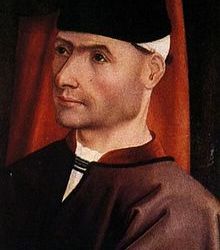
(Dunois)
Blood and alliance structure the party. But spiritual parentage also play a part. Jeanne has excellent relations with the Laval family, whose grandmother is the widow of Du Guesclin, who was godfather of Louis of Orleans. She gives her a gold ring, a link between the first saviour of the kingdom and the second one. She herself is the godmother, in the Orleans lands of Château-Thierry, of children of loyal subjects (of the king or of the duke ?) whom she names Charles. It is the name of the duke as well as that of the king.
Colette Beaune- Jeanne d'Arc
#xv#colette beaune#jeanne d'arc#armagnacs vs bourguignons#hundred years war#louis i d'orléans#charles i d'orléans#prince des poètes#dunois#robert de baudricourt#jean ii d'alençon#jeanne d'orléans#bonne d'armagnac#thibault d'armagnac#jean iv d'armagnac#bonne visconti#bertrand du guesclin#jeanne de laval
7 notes
·
View notes
Text
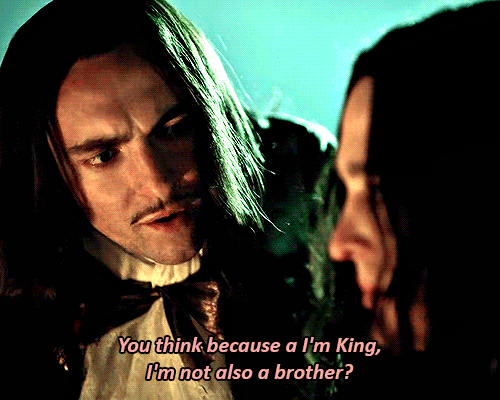


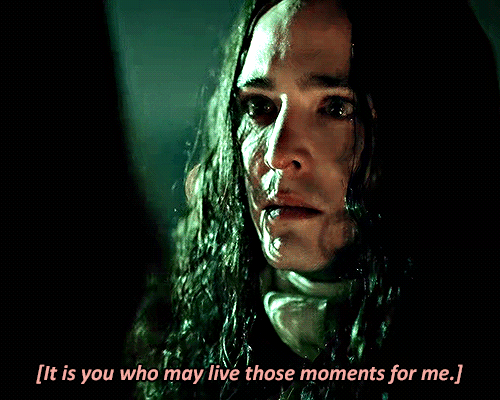
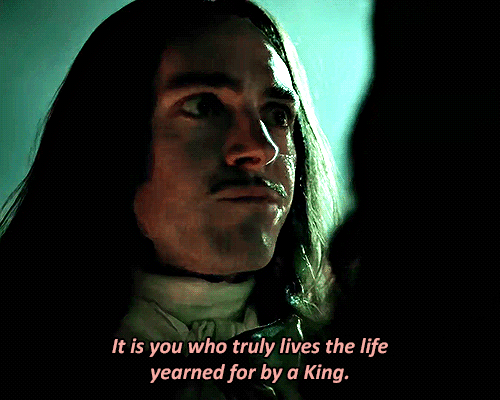
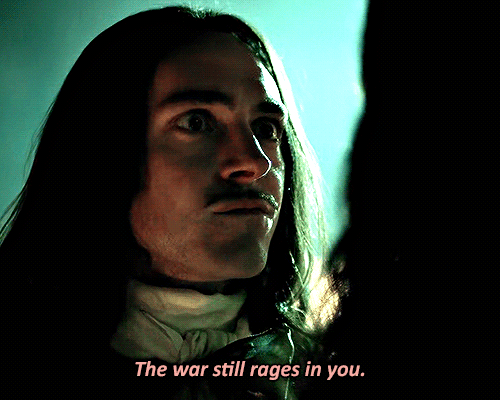
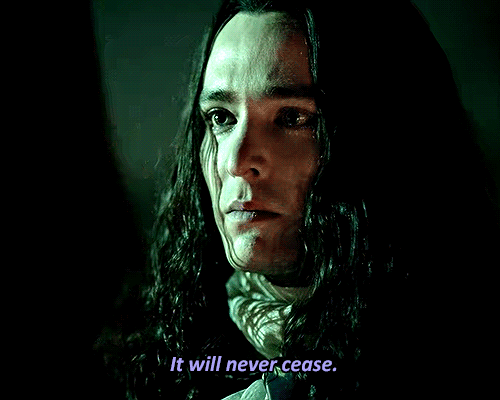
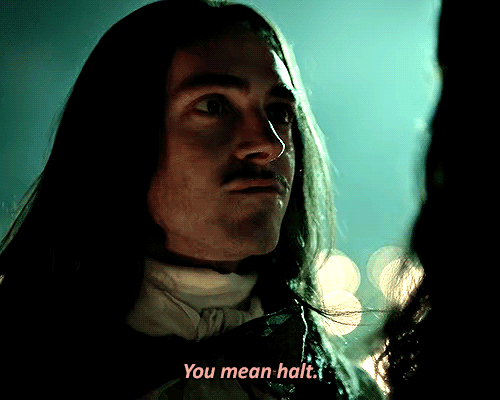



"On the field, I saw a man, young like we were. He carried his brother in a sack over his shoulder. He told me he had promised their mother to take him home. Would you do that for me? I would, but you? I do not know."
#i thought about this show yesterday and while i think the script and acting are bad...it's somewhat entertaining to watch idk#it's just drama after drama...although this scene is actually great though...#versaillesedit#versailles#philippe d'orléans#periodedit#periodedits#perioddramaedit#cinemapix#tvarchive#tvedit#perioddramacentral#alex vlahos#george blagden#louis xiv#dailytvfilmgifs#tvfilmcentral#userstream#tvfilmdaily#by jen
92 notes
·
View notes
Text

Equestrian portrait of Louis-Philippe I (1773-1850). By Horace Vernet.
#equestrian portrait#royaume de france#horace vernet#maison d'orléans#bourbon orleans#louis philippe i#duc d'orléans#roi de france#vive le roi
9 notes
·
View notes
Text





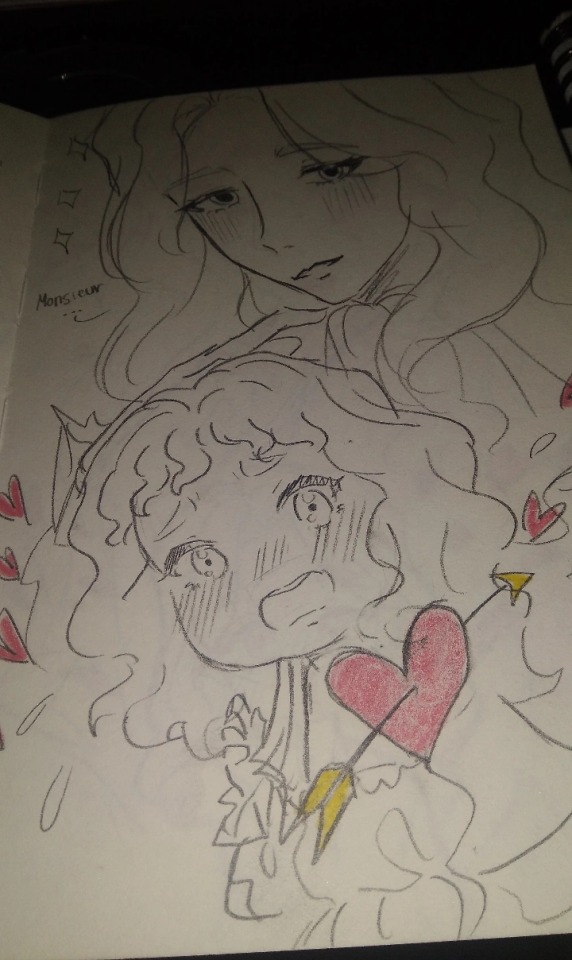


More monchevyyyy plus Louis xiv
#versailles#monchevy#louis xiv#chevalier de lorraine#philippe d'orléans#my artwrok#sketches#french history#shitpost#i ship it
12 notes
·
View notes
Text

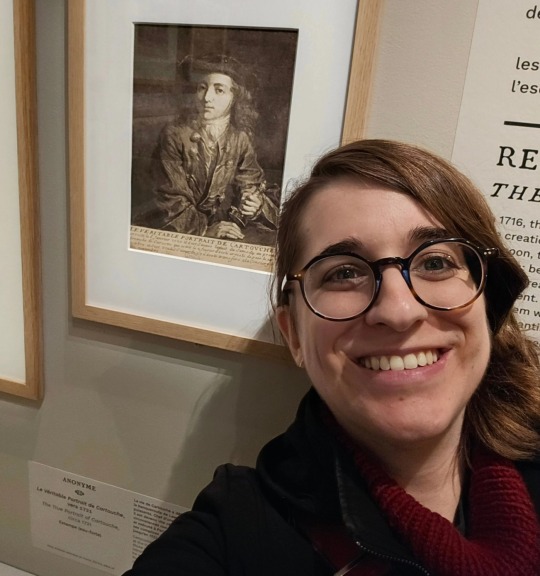
Saw the blorbos from my history books today!!! Was very hype about it!!
#Philippe II D'Orléans#Louis Dominique Cartouche#i didn't know the Cartouche portrait would be there!!!!! The hype!!#took lots of bad selfies w every single Philippe painting#they had the little furnace he'd make science experiments with!!!!#And the manuscript for his opera!!!! And the book he illustrated!#And his little painting!!!#sorry about the bad selfies but look you can see those things online but being physically close to them? V important to me!
2 notes
·
View notes
Text
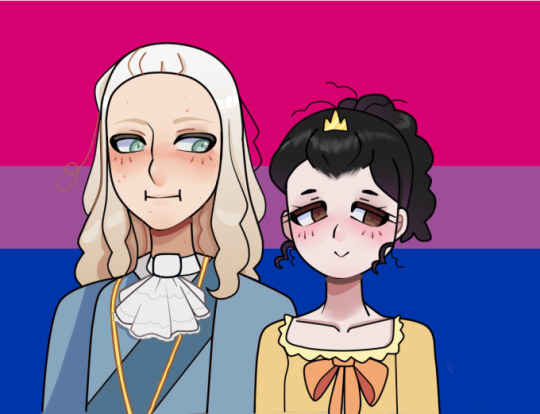
10 notes
·
View notes
Note
https://twitter.com/abtliselotte/status/1522887987192897536?s=21&t=2AnuxQHUNSXk2RSuXlAqOQ
I am not the one running the Twitter account, in case that is your question, but I appreciate this person's enthusiasm for Liselotte! We need more Liselotte enjoyers in this world.
The full quote this collage alludes to runs:
Marriage is like death: the day and the hour of it are marked; no one escapes. As our Lord God wills it, so it comes to pass.
Liselotte resented having been born a woman on account of the social restrictions her station as princess imposed upon her, as compared to her brother; as a child, her interests aligned more with activities that were at the time considered to be traditionally male-coded, and all her life had, to the annoyance of her fashion-conscious husband, no liking for clothes, make-up and jewellery. As an adult, she repeatedly stated in her letters that she would have preferred to have been born a male heir and become her father's successor as Elector Palatine rather than a prince's consort, which is an interesting statement, seeing as Liselotte has sometimes been interpreted as having been uninterested in politics (which was not the case, her letters contain frequent commentary on European politics at the time).
She clearly resented not being able to live a self-determined life according to her own wishes and choices which is the constant, melancholy undertone of her often so humorous and at times explosive letters that must not be forgotten in our retrospective analysis of her character.
#thanks anon for reminding me that i still have krautsalat in the fridge#a favourite dish both of liselotte's and yours truly#ask#ask reply#anon#liselotte von der pfalz#madame palatine#madame#history#17th century#18th century#philippe d'orléans#louis xiv#france#french history#german history#palatinate
21 notes
·
View notes
Text
The (early) Relationship between Georges de La Fayette and Louis Philippe I
Lately I have gone back to “the roots” so to speak – in other words, I have read the French version of La Fayette’s memoirs (and again realized that the first English version I read was somewhat strange.)
While reading, I found this passage in the fifth volume:
Je ne con les ducs d'Angoulême et de Berry; mais la manière dont le duc d'Orléans demanda de mes nouvelles à mon fils, qu'il avait vu aux États - Unis , me fit un devoir d'aller chez lui
My translation:
I don't know the dukes of Angoulême und de Berry; but the manner in which the Duc d’Orléans inquired after my son, whom he had seen in the United States, made it my duty to go to him.
Most of you are probably aware of the fact that the relationship between the La Fayette’s and the d’Orléans’ often was … interesting to say the least. The Marquis de La Fayette and the Ducs father, Louis Philippe II, Duke of Orléans or “Philippe Égalité” really did not get along during the French Revolution. In that context it is quite interesting to see how their sons connected.
During the course of the French Revolution Louis Philippe II was executed via the guillotine and his sons fled the country. His oldest son, the new Duc d’Orléans, the one mentioned in the quote above, lived in Switzerland before moving to England and later spending two years in North America, mostly in Philadelphia. In April of 1797 he and two of his brother visited Mount Vernon in Virginia before embarking on a three-month trip of the American backcountry. By October they had concluded their trip and George Washington noted in his diary for October 30, 1797:
30. Wind brisk from No. Wt. & cold. Mer. at 54. Doctr. Stuart went away after breakfast. Mr. Cottineau & Lady, Mr. Rosseau & Lady, the Visct. D’Orleans, & Mr. De Colbert came to Dinner & returned to Alexa. afterwards. A Mr. Stockton from N. Jerseys came in the afternoon.
“[Diary entry: 30 October 1797],” Founders Online, National Archives, [Original source: The Diaries of George Washington, vol. 6, 1 January 1790 – 13 December 1799, ed. Donald Jackson and Dorothy Twohig. Charlottesville: University Press of Virginia, 1979, pp. 265–266.] (09/29/2022)
By late 1797, Georges and Felix Frestel had begun their preparations to return to Europe but Georges would not be reunited with his family prior to February of 1798. I am therefor not quite sure if Georges and the Duc d’Orléans met during one of the described instances or elsewhere. Georges certainly had spent his fair share of time in Philadelphia as well.
One way or the other, the two young Frenchman in exile met and seemingly got along quite nicely. I have sadly never found a statement by Georges himself on the meeting or their subsequent relationship.
#marquis de lafayette#la fayette#american history#french history#french revolution#history#1797#george washington#georges washington de lafayette#louis philippe#louis philippe i#duc d'orléans#founders online
13 notes
·
View notes
Text
Geneviève d’Eon & Marie-Jeanne Bertin: Clothing and Gender in 18th Century France
"After being fully dressed by famous designer Rose Bertin for the first time, they ran to their room and cried for hours." ~ Kaz Rowe, The Chevalier d'Eon: the Trans 18th Century Spy
Kaz Rowe throws this story out there in their video on d'Eon as a part of their justification in using they/them pronouns for d'Eon who used she/her pronouns. Rowe never really explains the context for this story. It sounds dramatic on the surface, d'Eon spent hours crying over being forced into women's clothes. But did this really happen?
This story comes from d'Eon's own autobiographical writings that she never finished. Segments of her drafts were translated and published by Roland A. Champagne, Nina Ekstein, and Gary Kates in The Maiden of Tonnerre. The title comes from d'Eon who styled herself la pucelle de Tonnerre after Joan of Arc who was known as la pucelle d'Orléans.
Some things to consider before we start:
D'Eon's autobiographical writings operate under the pretence that she was afab and raised as a boy for inherence reasons. We have to remember that these writings are heavily fictionalised, a necessity in upholding the lie that allowed d'Eon to live as a woman. However that doesn't mean that there is no historical value in these writings. Instead of simply taking these stories as fact we must consider: Why is d'Eon presenting this story in this way? How does this story serve the narrative d'Eon is constructing for herself?
D'Eon in this story claims she had never worn women's clothing before. This is contradicted by d'Eon's own claim of infiltrating the court of Empress Elizabeth of Russia as a woman. While its hard to pinpoint the exact moment d'Eon first wore women's clothes I personally suspect it was much earlier than this.
D'Eon also includes a scene where she is bathed by Bertin's assistants. This scene is almost certainly fictional as if it happened in reality this would reveal that d'Eon had a penis, a fact she wanted to keep secret. This scene is almost certainly included to add to the 'evidence' that d'Eon was afab.
Considering these points we must consider that this story did not take place literally as d'Eon depicts it. Instead of taking this story as an accurate recollection of events I consider it a fictionalised story (based on true events). The goal in my analysis is to ask what is d'Eon trying to communicate though this story.
Some background information to add context:
D'Eon had prior to this incident signed a transaction with Louis XVI in which she was legally acknowledged as a woman and ordered by Louis XVI to wear woman's clothes. D'Eon agreed to "declaring publicly my sex, to my condition being established beyond a doubt, to resume and wear female attire until death," but then adds "unless, taking into consideration my being so long accustomed to appear in uniform, his Majesty will consent, on sufferance only, to my resuming male attire should it become impossible for me to endure the embarrassment of adopting the other". (see D'Eon de Beaumont, his life and times by Alfred Rieu, p174-182 for an English translation of the transaction)
We also must consider that d'Eon did not dispute the fact that she was a woman when signing the transaction, nor does she dispute this in her autobiographical writings. D'Eon was very much arguing that she, as a woman, should be allowed to continue to wear men's clothing (specifically her dragoon uniform) as that is what she was used to wearing and comfortable wearing.
Also mentioned in the following excerpt is the English trial over d'Eon's sex in which it was found that d'Eon was a woman. I'm not going to get too into the topic here as it's a whole other can of worms. However I think it's important to understand that while d'Eon had issues with aspects of the trial she would use the ruling to support her claim that she was afab.
The Maiden of Tonnerre: Chapter VII
Selections from the great interview between Mademoiselle Bertin and Mademoiselle d'Eon in Paris on October 21, 1777
Mademoiselle Bertin. I have come vary early in the morning to spare you trouble and embarrassment. But what else can I do? You must either go through this or through the gates of a convent.
Mademoiselle d'Eon. It is easy to do otherwise. Just leave me as I am. I have lived for forty-eight years this way. I cannot live all that much longer. I am impatiently awaiting the great change that will transform us all making all of us eternally equal.
Mademoiselle Bertin. The Court in its patience will never have the endurance to wait that long. Remember that it was a deliberate error on the part of your father, your mother, and yourself that resulted in Mademoiselle d'Eon's wearing men's clothing and a military uniform. But since that time things have changed considerably, and today by order of King and the law, the bad boy must become a good girl.
It's interesting that here d'Eon has Bertin distinguish between "men's clothing" and "military uniform". As women were not allowed in the French military at this time all French military uniforms were as such men's clothing. But d'Eon did not simply want to wear men's clothing she wanted to wear her military uniform.
Mademoiselle d'Eon. If I was a boy by mistake, one could inadvertently allow me to continue to be one. While you are correct about the substance of the matter, I am not wrong about the form.
Mademoiselle Bertin. That is not possible now. Your trial created too much of a stir.
Mademoiselle d'Eon. I am a reliable bugler in my squadron. I am not frightened by noise. The Court's behaviour, by its very decency, has wound up being indecent. I would have thought that the King would have been willing to allow me to wear the uniform of a former dragoon captain, Knight of Saint Louis, and plenipotentiary minister, since he was kind enough to allow me to wear the cross of the royal and military order of Saint Louis on my dress. Do you see how everything at court is so arbitrary? There one could say every day: Contraria contrariis opponuntur [A contrary opposes other contraries].
Again we see the focus is that d'Eon wanted to wear her dragoon uniform. She likens this directly to her cross of Saint Louis which Louis XVI did permit her to wear on her women's clothes. As the cross of Saint Louis was only awarded to men it is arguably also menswear. D'Eon is pointing out the arbitrary nature of this distinction. Why is she permitted to wear an idem of menswear, the cross of Saint Louis, but not another, her dragoon uniform. To d'Eon these both represent her achievements rather than manhood, she is arguing that she, a woman, should be allowed to wear them.
Mademoiselle Bertin. I concede that every day we see in the streets of Paris a tall young woman in the uniform of a dragoon publicly giving lessons on the use if arms. But remember that this girl was a mere dragoon and that she had no other way to earn a living. To do so, she had written permission to dress as a dragoon form the lieutenant general of the Paris police. But the Court would never grant such permission for a young woman from a good family who had been in France and in foreign courts as Mademoiselle d'Eon has been.
Mademoiselle d'Eon. In a well-regulated country, the law must not allow preferential treatment to anyone.
Mademoiselle Bertin. You can go to Versailles to argue with the Chancellor of France, your former schoolmate. But with Mademoiselle Bertin, it can serve no purpose to argue. Do not take this matter so far as to have a falling out with the King's ministers or the royal Treasury. Remember, Mademoiselle, that in France a maiden who obeys the law and the King must wear her dress and petticoat, whether to remain in this world or to spend her time in the convent.
Mademoiselle d'Eon. Your advice is wise and prudent. I would rather follow you into the royal Treasury than into a convent.
Mademoiselle Bertin. My honorable captain, don't think that you are dishonored by having been found to be a woman. The discomfiture is temporary, and the glory will be with you forever. But let us not wast uselessly the precious time needed to begin and end your outfitting before the return of Major Varville.
Mademoiselle d'Eon. I see that Mademoiselle Bertin is correct about all that she says and does and that a lady-in-waiting to the Queen is thus wiser in her comportment and in her begetting than all the children of the Enlightenment and all the captains of the army.
Without delaying further and having followed the instructions of Mademoiselle Bertin, the Dragoon was, in a short period of time, divested of his serpent's skin and transformed into an angel of light. Her head became as lustrous as the sun. Her whole outlook on things changed as much as did her face. No trace of the dragoon remained in her.
Mademoiselle Bertin thought she was consoling me by saying: "The Queen doesn't despise bravery in a well-born maiden. But out of duty she prefers to find in her decency, honor, and virtue. If Louis XV armed you as a Knight of French soldiers, Louis XVI arms you as a chevalière of French women. And the Queen crowns your wisdom by commanding me to bring to you this new armor, which must accompany your coiffure and your demeanor so that you may become the leading general of all the honorable women of France. The time has come for us to be edified and not scandalized by Mademoiselle d'Eon's conduct. Why don't you offer up your uniform as a sacrifice at Notre Dame de Paris or in your holy anger throw it out the window in order to stand witness before the people of Israel, the Parisians, the Scribes, and the Pharisees that you are now following the letter of the law that Moses gave us in his commandments."
While Mademoiselle Bertin had me get into the bath to be washed, soaped and scrubbed down by her companions, I told her: "Proceed as quickly as possible; do not waste time with the preparations so that I too may keep part of my own dignity as it is joined with yours and that of your seamstresses. Virtuous Bertin, honest messenger form the chamber of the Queen, I fully realize that the hour is at hand for me to follow the directive of the law and the King. As a victim, I am offered up in sacrifice since you do me harm in order to do me good. All women are going to point at me, and all the maidens are going to thumb their noses at me when they see me dressed in style and done up like a doll or at the very least like a Vestal Virgin who is led to the marriage altar."
We see in this excerpt Bertin acts as an authority ushering d'Eon into womanhood, the transformation is painful but ultimately positive for d'Eon; "you do me harm in order to do me good". But there is this real fear of being mocked by other women. At least part of d'Eon's trepidation to don women's clothes comes form the fear of humiliation. We see this fear also reflected in the transaction when she begs King Louis to "consent, on sufferance only, to my resuming male attire should it become impossible for me to endure the embarrassment of adopting the other".
Mademoiselle Bertin. Put aside your concerns about what other will say. Must what the mad say prevent us from being wise?
Mademoiselle d'Eon. Alas, at court everything is beautiful. To please the court, does a former captain have to become a pretty boy [demoiseau]?
Mademoiselle Bertin. Yes, absolutely, when the so-called "boy" is discovered to be in fact a girl by the systems of justice both in England and in France.
Mademoiselle d'Eon. Speaking of justice, is Mademoiselle Bertin, the Queen's servant, also the enforcer of justice?
Mademoiselle Bertin was stung. "Don't be angry," I told her, "I simply wanted you to acknowledge, for you are just in all matters, that I cannot fit into the dress you brought me."
Mademoiselle Bertin remained disconcerted for a moment. But she soon regained her composure and said to me: "If you are a patient girl, the dress that I made for you in the name of Justice will soon be taken out to fit you. And I predict for you that the certainty of happiness will come form the alleged abyss of your unhappiness."
Then, looking pleased with herself, she said to me: "I am glad about having stripped you of your armor and your dragoon skin in order to arm you from head to toe with your dress and finery. In you I have found the power to possess the benefit of simple tonsure without a papal dispensation. Give thanks to God. You can assuredly double your chances of attaining eternal life, for which all of us search amidst this life's sorrows, troubles and suffering. Tomorrow you will suffer less, and the following day you will not suffer at all. In a little while, you will enjoy the relaxation and the joy that are the natural prerogatives of a Catholic girl who loyally follows the breviary of Rome and Paris, which was annotated, revised, and made available to the Daughters of Holy Mary and the Queen's women. You are not yet canonized, but soon you will be beatified when your upcoming marriage is canonically approved. Better this for you than a cannon shot."
D'Eon at this time was considering joining a convent. Bertin is referring to d'Eon's marriage to Christ.
Mademoiselle d'Eon. You can even say that regarding a hail of cannon shots. ... But when I reflect on my past and present states, I will never have the courage to go out in public dressed as you have me. You have illuminated and brightened me up so much that I dare not look at myself in the mirror that you brought me.
Mademoiselle Bertin. A room is not lit up in order to hide it or to keep it in the dark, but rather it is placed beneath a chandelier so that those who enter can see the light and be edified by your conversion.
Mademoiselle d'Eon. I know that there is nothing hidden that should not be revealed or anything secret that cannot be known. Therefore, I will not seek my own willpower but that of the King who sent you here to Mademoiselle d'Eon to change what is bad into something good. Since he obliges me to choose the best way, it will not be taken away from me. What is worth choosing is worth maintaining. When you came to me, I thought you were bringing me death. Now I go to you in order to be alive, because I am no longer chasing after the false vainglory of the dragoons, but after the solid glory of maidens of pease. I am no longer looking for my own glory. There is another who is seeking it for me and is judging it. This order is the most Christian King following the opinion of his Council and his apostolic Sanhedrin, who grants me glory so that I myself might experience that God's will is perfect, that will of the law is just, the King's will is good, and that of the Queen pleasant, decent, and proper, because the Son of Man came to save what was lost.
After this conversation, I quickly left the room and hurried to my bedroom, where I wept bitterly. Mademoiselle Bertin closely followed me and uselessly proposed both a drink and smelling salts in order to console me. I stopped crying only when my tears naturally dried up. Mademoiselle Bertin, as a crafty member of the Court, took advantage of my weekness by saying: "You are certainly not unaware of the joy experienced by the public in Paris when they heard sung the verses about the Heroine from Tonnerre, which were recently printed and are being sung throughout France."
That was the only thing that calmed me in my distress, for when a heart is not entirely dedicated to God it is partly attached to this world. Only vanity can console such an individual because this world prefers human glory to the divine.
And so that it. Thats the moment that d'Eon "cried for hours" after being dressed by Mademoiselle Bertin. So what is d'Eon trying to communicate to the reader in this excerpt?
"When you came to me, I thought you were bringing me death. Now I go to you in order to be alive" is a key part of d'Eon's speech to Bertin, it mirrors an earlier moment in chapter VI where d'Eon says to Bertin "You have killed my brother the dragoon. That leaves me with a heavy heart." In order for d'Eon to become a woman the man or more precisely the dragoon must be killed. D'Eon tries to hang onto both womanhood and her identity as a dragoon but she isn't allowed to.
She cries in morning for the loss of the dragoon she once was and is only cheered by Bertin reminding her that she is now a Heroine. However the d'Eon who is narrating this story criticises her past self for vanity. We see this thought continued in the next chapter:
There is no doubt that it would have been preferable, for my happiness in this world and my salvation in the one to come, had my investiture taken place forty years earlier, because the dragoon disease is so deeply rooted in me that I greatly fear that our saintly Madame Louise will unite with our holy Archbishop, the good Marquis de l'Hôpital, and his pious spouse to have me put away in a hospital for the incurable.
D'Eon presents her transformation into womanhood at the hands of Mademoiselle Bertin as a painful experience but ultimately a necessary and good one that brought her happiness in the long term. I'll leave off with d'Eon's words:
That was all I could respond to Mademoiselle Bertin's questions, whether they were hers alone or form on high. I answered them in a satisfactory manner according to my system of moderation, so appropriate to my position and to the disposition that heaven has inspired in me, and not that of the dragoon, which I drove out of my clothes and away from the wardrobe that the honorable messenger of the Queen had brought me. Thus I can say without flattery that Mademoiselle Bertin is the best of the women who can be found at the Court, in the city, in Picardy, in France, and in the world. My dear Mademoiselle Bertin, it will soon be midnight return to rejoin your forty Virtues as if it were midday.
77 notes
·
View notes
Text

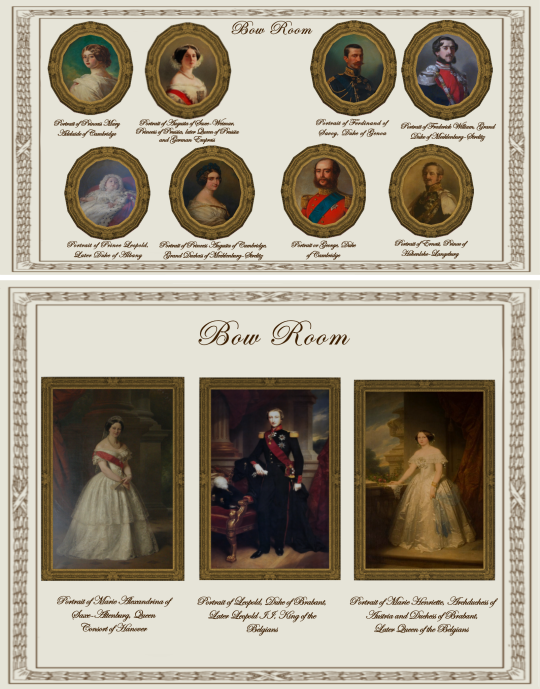
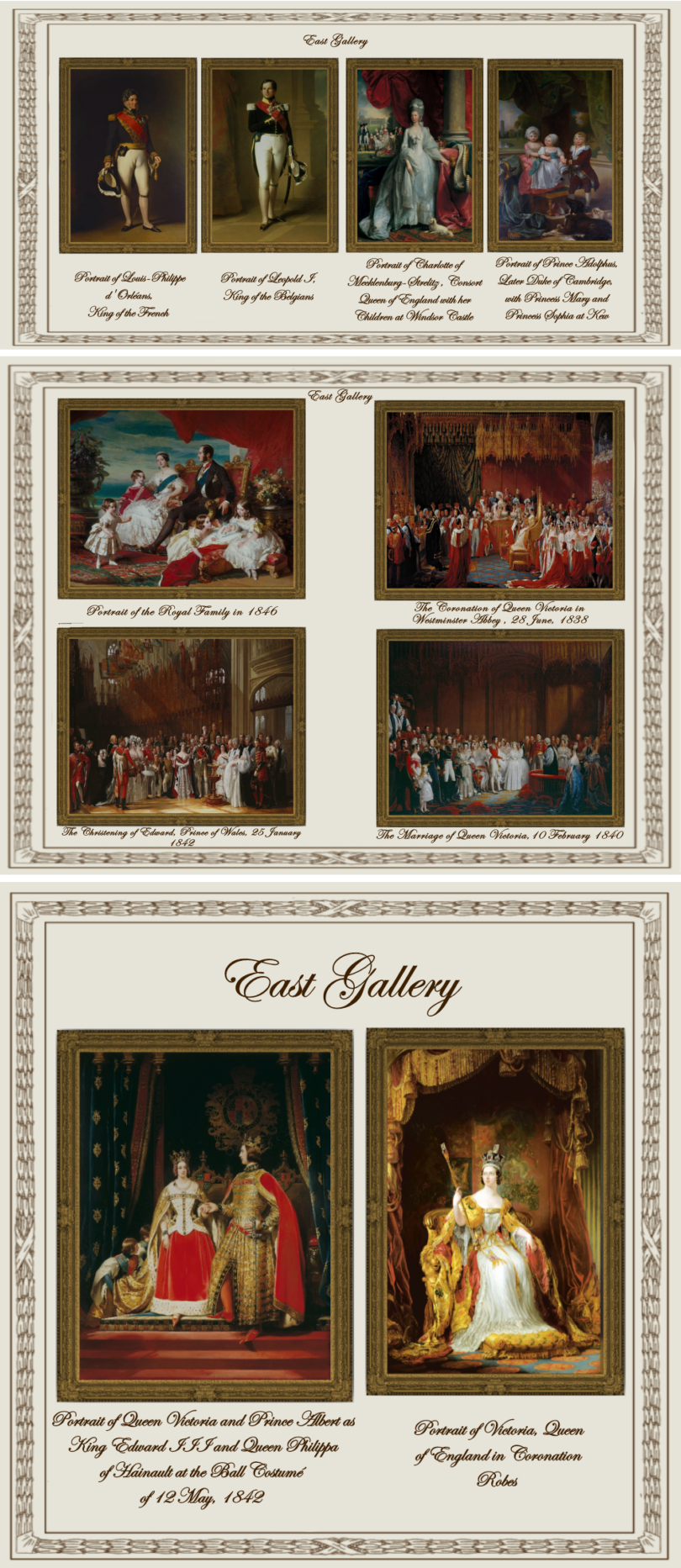
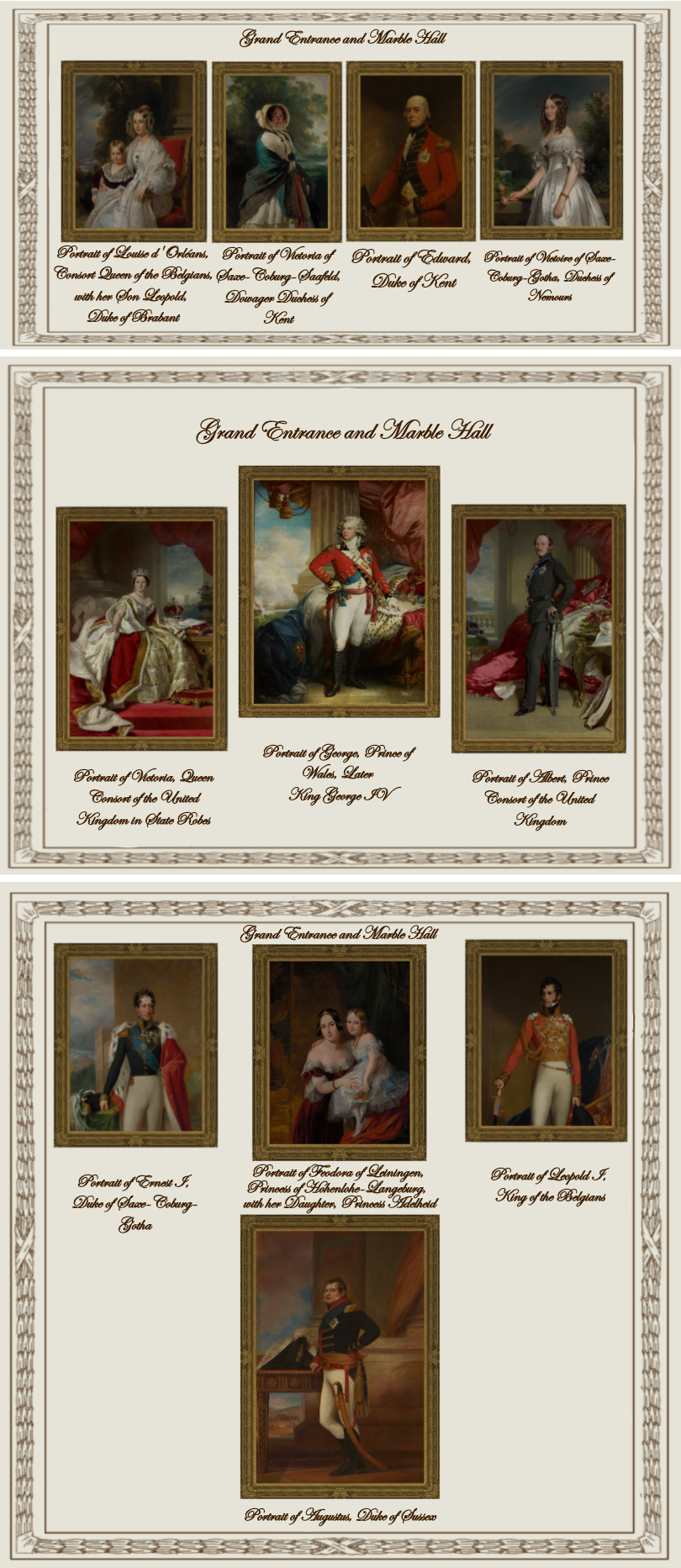

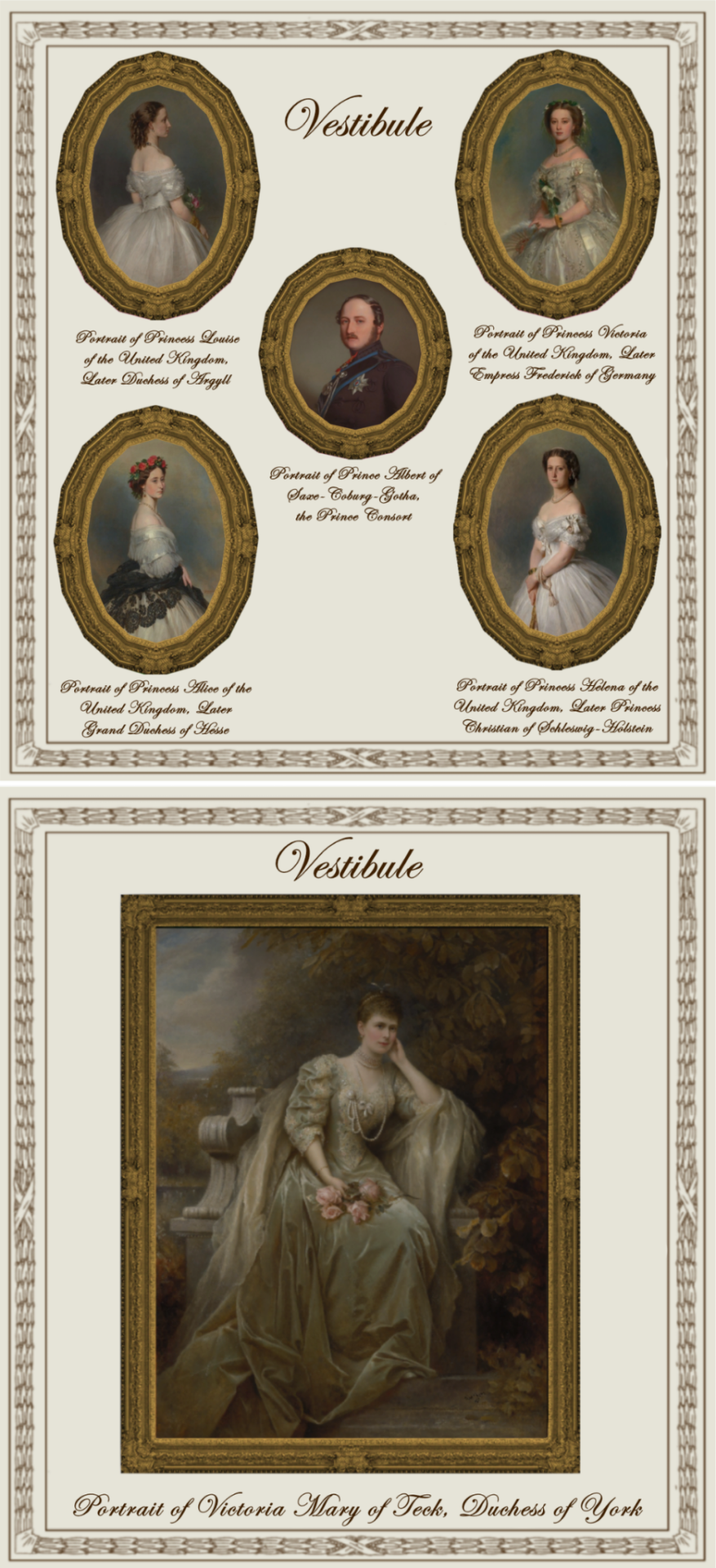


Paintings from Buckingham Palace: part II
A retexture by La Comtesse Zouboff — Original Mesh by @thejim07
Spread among 13 occupied and historic royal residences in the United Kingdom, the collection is owned by King Charles III and overseen by the Royal Collection Trust. The British monarch owns some of the collection in right of the Crown and some as a private individual. It is made up of over one million objects, including 7,000 paintings, over 150,000 works on paper, this including 30,000 watercolours and drawings, and about 450,000 photographs, as well as around 700,000 works of art, including tapestries, furniture, ceramics, textiles, carriages, weapons, armour, jewellery, clocks, musical instruments, tableware, plants, manuscripts, books, and sculptures.
Some of the buildings which house the collection, such as Hampton Court Palace, are open to the public and not lived in by the Royal Family, whilst others, such as Windsor Castle, Kensington Palace and the most remarkable of them, Buckingham Palace are both residences and open to the public.
About 3,000 objects are on loan to museums throughout the world, and many others are lent on a temporary basis to exhibitions.
-------------------------------------------------------
The second part includes paintings displayed in the Ball Supper Room, the Ballroom, the Ballroom Annexe, the Bow Room, the East Gallery, the Grand Entrance and Marble Hall, the Minister's Landing & Staircase, the Vestibule, the Chinese Dining Room and the Balcony Room.
This set contains 57 paintings and tapestries with the original frame swatches, fully recolourable. They are:
Ball Supper Room (BSR):
Portrait of King George III of the United Kingdom (Benjamin West)
Ballroom (BR):
The Story of Jason: The Battle of the Soldiers born of The Serpent's Teeth (the Gobelins)
The Story of Jason: Medea Departs for Athens after Setting Fire to Corinth (the Gobelins)
Ballroom Annexe (BAX):
The Apotheosis of Prince Octavius (Benjamin West)
Bow Room (BWR):
Portrait of Princess Mary Adelaide of Cambridge (William Corden the Younger)
Portrait of Princess Augusta of Cambridge, Grand Duchess of Mecklenburg-Strelitz (Alexander Melville)
Portrait or George, Duke of Cambridge (William Corden the Younger)
Portrait of Frederick William, Grand Duke of Mecklenburg-Strelitz (Franz Xaver Winterhalter)
Portrait of Augusta of Saxe-Weimar, Princess of Prussia, later Queen of Prussia and German Empress (Franz Xaver Winterhalter)
Portrait of Prince Leopold, Later Duke of Albany (Franz Xaver Winterhalter)
Portrait of Ernest, Prince of Hohenlohe-Langeburg (Franz Xaver Winterhalter)
Portrait of Ferdinand of Savoy, Duke of Genoa (Eliseo Sala)
Portrait of Marie Alexandrina of Saxe-Altenburg, Queen Consort of Hanover (Carl Ferdinand Sohn)
Portrait of Leopold, Duke of Brabant, Later Leopold II, King of the Belgians (Nicaise de Keyser)
Portrait of Marie Henriette, Archduchess of Austria and Duchess of Brabant, Later Queen of the Belgians (Nicaise de Keyser)
East Gallery (EG):
Portrait of Leopold I, King of the Belgians (Franz Xaver Winterhalter)
Portrait of Victoria, Queen of England in Coronation Robes (Sir George Hayter)
Portrait of Louis-Philippe d'Orléans, King of the French (Franz Xaver Winterhalter)
Portrait of Charlotte of Mecklenburg-Strelitz, Consort Queen of England with her Children at Windsor Castle (Benjamin West)
Portrait of Prince Adolphus, later Duke of Cambridge, With Princess Mary and Princess Sophia at Kew (Benjamin West)
The Coronation of Queen Victoria in Westminster Abbey, 28 June, 1838. (Sir George Hayter)
The Christening of Edward, Prince of Wales 25 January, 1842 (Sir George Hayter)
The Marriage of Queen Victoria, 10 February, 1840 (Sir George Hayter)
Portrait of the Royal Family in 1846 (Franz Xaver Winterhalter)
Portrait of Queen Victoria and Prince Albert as King Edward III and Queen Philippa of Hainault at the Ball Costumé of 12 May, 1842 (Sir Edwin Landseer)
Grand Entrance and Marble Hall (GEMH):
Portrait of Edward, Duke of Kent (John Hoppner)
Portrait of Ernest I, Duke of Saxe-Coburg-Gotha (George Dawe)
Portrait of Victoria of Saxe-Coburg-Saafeld, Dowager Duchess of Kent (Franz Xaver Winterhalter)
Portrait of Albert, Prince Consort of the United Kingdom (Franz Xaver Winterhalter)
Portrait of Victoria, Queen Consort of the United Kingdom in State Robes (Franz Xaver Winterhalter)
Portrait of Louise d'Orléans, Consort Queen of the Belgians, with her Son Leopold, Duke of Brabant (Franz Xaver Winterhalter)
Portrait of Feodora of Leiningen, Princess of Hohenlohe-Langeburg, with her Daughter, Princess Adelheid (Sir George Hayter)
Portrait of George, Prince of Wales, Later King George IV (Mather Byles Brown)
Portrait of Victoire of Saxe-Coburg-Gotha, Duchess of Nemours (Franz Xaver Winterhalter)
Portrait of Augustus, Duke of Sussex (Domenico Pellegrini)
Portrait of Leopold I, King of the Belgians (William Corden the Younger)
Minister's Landing and Staircase (MLS):
Portrait of George, Prince of Wales in Garther Robes (John Hoppner)
The Loves of the Gods: The Rape of Europa (the Gobelins)
The Loves of the Gods: The Rape of Proserpine (The Gobelins)
Vestibule (VL):
Portrait of Prince Albert of Saxe-Coburg-Gotha, the Prince Consort (Unknown Artist from the German School)
Portrait of Princess Alice of the United Kingdom, Later Grand Duchess of Hesse (Franz Xaver Winterhalter)
Portrait of Princess Helena of the United Kingdom, Later Princess Christian of Schleswig-Holstein (Franz Xaver Winterhalter)
Portrait of Princess Louise of the United Kingdom, Later Duchess of Argyll (Franz Xaver Winterhalter)
Portrait of Princess Victoria of the United Kingdom, Later Empress Frederick of Germany (Franz Xaver Winterhalter)
Portrait of Victoria Mary of Teck, Duchess of York (Edward Hughes)
Chinese Dining Room or Pavilion Breakfast Room(CDR):
Set of Four Painted Chinoiserie Wall panels I (Robert Jones)
Set of Four Painted Chinoiserie Wall panels II (Robert Jones)
Set of Four Painted Chinoiserie Wall panels III (Robert Jones)
Set of Four Painted Chinoiserie Wall panels IV (Robert Jones)
Balcony Room or Centre Room (BR):
Chinoiserie Painted Panel I (Robert Jones)
Chinoiserie Painted Panel II (Robert Jones)
Chinoiserie Painted Panel III (Robert Jones)
Chinoiserie Painted Panel IV (Robert Jones)
EXTRAS! (E):
I decided to add the rest of the tapestries from the story of Jason (wich hangs in the Grand Reception Room at Windsor Castle) and (with Jim's permission) added the original mesh for paintings number 2,3,4 & 5 from the Vestibule (seen here and here) wich was never published. These items are:
The Story of Jason: Jason Pledges his Faith to Medea (the Gobelins)
The Story of Jason: Jason Marries Glauce, Daughter of Creon, King of Thebes (the Gobelins)
The Story of Jason: The Capture of the Golden Fleece (the Gobelins)
The Story of Jason: The Poisoning of Glauce and Creon by Medea's Magic Robe (the Gobelins)
Sea Melodies (Herbert James Draper) (made by TheJim07)
-------------------------------------------------------
Found under decor > paintings for:
500§ (BWR: 1,2,3,4,5,6, & 8 |VL: 1)
570§ (VL: 2,3,4 & 5 |E: 5)
1850§ (GEMH: 1 & 3)
2090§ (GEMH: 2,6,7, 9 & 11)
3560§ (GEMH: 4,5 & 10 |BSR: 1 |EG: 1,2,3,4 & 5 |MLS: 1 |BAX: 1)
3900§ (CDR: 1,2,3 & 4 |BR: 1,2,3 & 4 |EG: 10 |VL: 6 |GEMH: 8)
4470§ (MLS: 2 |E: 1)
6520§ (BR 1 & 2| MLS: 3 |EG: 6,7,8 & 9 |BR: 1 & 2 |E: 2,3 & 4)
Retextured from:
"Saint Mary Magdalene" (BWR: 1,2,3,4,5,6, & 8 |VL: 1) found here.
"Sea Melodies" (VL: 2,3,4 & 5 |E: 5)
"The virgin of the Rosary" (GEMH: 1 & 3) found here.
"Length Portrait of Mrs.D" (GEMH: 4,5 & 10 |BSR: 1 |EG: 1,2,3,4 & 5 |MLS: 1 |BAX: 1) found here
"Portrait of Maria Theresa of Austria and her Son, le Grand Dauphin" (CDR: 1,2,3 & 4 |BR: 1,2,3 & 4 |EG: 10 |VL: 6 |GEMH: 8) found here
"Sacrifice to Jupiter" (MLS: 2 |E: 1) found here
"Vulcan's Forge" (BR 1 & 2| MLS: 3 |EG: 6,7,8 & 9 |BR: 1 & 2 |E: 2,3 & 4) found here
(you can just search for "Buckingham Palace" using the catalog search mod to find the entire set much easier!)
Disclaimer!
Some paintings in the previews look blurry but in the game they're very high definition, it's just because I had to add multiple preview pictures in one picture to be able to upload them all! Also sizes shown in previews are not accurate to the objects' actual sizes in most cases.

Drive
(Sims3pack | Package)
(Useful tags below)
@joojconverts @ts3history @ts3historicalccfinds @deniisu-sims @katsujiiccfinds @gifappels-stuff
-------------------------------------------------------
#the sims 3#ts3#sims 3#s3cc#sims 3 cc#sims 3 download#sims 3 decor#edwardian#victorian#regency#georgian#buckingham#buckingham palace#wall decor#sims 3 free cc#large pack#this was exhausting
48 notes
·
View notes
Note
Despite considering myself to be rather knowleadgeable about Marie Antoinette and her various endeavours and portrayals in media, I have to admit that i never heard of the Musical. Would you enlighten me about it and maybe advise where to watch it? 😁😁😁
Of course!
So, Marie Antoinette das Musical.
Based on a book by Shusaku Endom, premiered in Japan in 2006, as a collaboration between Michael Kunze and Szilvester Levay, known for Elisabeth das Musical, Mozart das Musical, and Rebecca das Musical, and went on to premiere in Germany in 2009. Both productions didn't do particularly well, even though they did have cast albums released. (I...still have to translate the German libretto, if only for the sake of keeping up my German skills.) There were some major structural flaws -- Marie Antoinette was too bitchy (throwing an actual temper tantrum, like a child, so that Louis would dismiss Necker; tossing champagne at a poor woman's head because she interrupted her ball and Marie thought it would be funny), her sympathetic qualities were either downplayed or erased in favor of her love affair with Fersen, which was reduced to "Good Man In Love With Bitchy Woman Who Knows She Isn't Good Enough For Him, But Don't Worry, He Loves Her Anyway", but the justifiable reasons for the Revolution were reduced to "Bitter poor people want Revenge and Go Against God", it had a bloated plot with too many characters, etc. etc. etc. It was, and I'm saying this as someone who ADORES messy musicals, one of the single biggest disasters I've ever forced myself to sit through, in the sense that it wasn't even particularly *entertaining.*
But, in 2014, an international crew got together to do the Korean production, and they essentially rewrote the whole thing. Not a shallow rewrite either, they TOTALLY REWROTE IT FROM THE GROUND UP. Songs were cut and added as needed, sometimes being given to different characters or put in different scenes, superfluous characters were removed, the plot was tightened to focus on the characters involved, Marie was rewritten into a flawed, but understandable character, not a sexist caricature. This was the version of the plot that would premiere in Hungary in 2016 and back to Japan in 2018 and 2021, becoming an international success.
The musical follows two women -- Marie Antoinette and Margrid Arnaud, two women with the same initials who lead very different lives. While Marie lives a life of oblivious privilege, Margrid lives on the streets. She was educated in a convent as a child, as the result of a mysterious benefactor (her mother having committed suicide) but was tossed out on the streets when the money ran out, and she's had to live by her wits since then. The two of them meet when Margrid interrupts a ball being held at Palais Royal to celebrate Marie's return to society. Margrid calls for the aristocrats to pay attention to the plight of the poor, who are starving, but all Marie can do is offer her a glass of champagne, which Margrid, furious at the lack of understanding, tosses in her face, swearing revenge. She joins up with the Duc d'Orléans, who is running a smear campaign in order to convince the public that he should be the rightful king, and things go downhill from there...
Some of the strongest points in the musical's favor:

Strong female characters. A term that's often thrown around casually, but, honestly, I love the musical for how it deals with the rivalry between Margrid and Marie, because neither one is fully wrong or fully right. We understand why both of them make the decisions they do and how it leads them to where they are by the end, and they go through an entire arc together. Margrid in particular is one of my characters of all time for being a woman who is brilliant, an absolute gremlin, strikingly vulnerable, and evasive. She's flawed, she's aggressive, vindictive, and spiteful, but we're also allowed to see WHY she's that way and how thoroughly fucked up she is by what's happened to her in the past. She is someone who truly doesn't believe that she's capable of being loved or of loving someone else -- platonically or romantically, because every experience she's had of love ended in betrayal, even when she desperately wants it. Meanwhile, Marie is both trapped in a life of fame and fortune while also believing, firmly, that that is her god-given right. She never believes that her position is anything other than her right by God, even when it involves spilling French military secrets to the other European powers when the Revolution goes a little crazy. She adores her family, she adores her husband, but she's also in love with Fersen (which...I don't like historical Fersen, but musical!Fersen, I tolerate.) You feel sympathetic for her by the end, but she doesn't demand sympathy.
Great villain. I love the Duc d'Orléans in this musical so much. Louis Philippe Joseph was a complicated man historically, and, depending on the actor, he's a complicated man in the musical. He's been simplified, but you can still SEE at times that he isn't a monster -- he genuinely ENJOYS working with Margrid, he's a good boss, he isn't necessarily WRONG about certain things, even when he's selfish in the way he goes about it (there's a great moment in the 2018 Japanese production where he sees Marie reject a peace offering from Cardinal de Rohan, and you can just SEE him dying inside, like "oh, God, she actually DID that." Margrid's eventual break with him isn't even that he betrayed HER or that HE changed his goals...she did. Which makes for a much more interesting dynamic than "evil man manipulates woman and then betrays her."

There's also a masquerade scene where they go undercover together. And yes, I went batshit over this and have still not recovered. (Please note that they are being used to contrast Fersen/Marie here, to make the ship bait worse.)

They're just. Like this. With one another. In one of the Korean productions, you can clearly hear her call him "Philippe" which murdered me.

I don't have any gifs of this scene without text on it, but the look on both of their faces by the end is...
Anyway, semi-canonical (depending on the production/actors) villainfucking angst, who is doing it like them?
The costumes are great (with the exception of the Hungarian, sorry Hungary.)
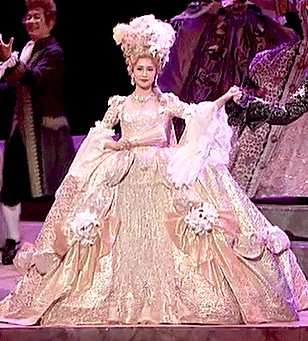

(The same dress from the same scene in both Japan and Korea)
It is bizarrely accurate in some ridiculously minute ways, like the Toho production actually DOING A RECREATION OF THE HISTORICAL MARIE'S BED.

Historically accurate pamphlet, shown in a projection while Orléans is singing about his strategy to turn the people against her. I legitimately had to pause the screen the first time I saw it because I couldn't believe my eyes. (Yes, I now pause it on each stream.)
Like, don't get me wrong, it still gets a LOT wrong, or changes details around to make 9 years of someone's life fit into a two hour musical, but both the Korean and the Japanese productions DO care about details in ways that higher budget films and TV series often don't.
And, of course, some killer songs. (Orléans' villain song, Marie's song, Act 1 finale -- all from the Korean, since they are slightly better at putting songs out, with the Japanese trailer.)
The Korean and Japanese bootleg environments tend to be...stricter than Broadway -- there have been proshots released for both at various times (the Toho production is actually available to buy if you have a Japanese proxy who can send it to you), to the point where I can't *say* if I have access to the Korean, but I have bought both DVDs of the two Japanese casts and have been known to stream it. If you're interested, I'm always willing to schedule something, especially since it's been ages since I've done anything like it.
6 notes
·
View notes
Text
#xiv#xv#valentine visconti#house visconti#duchesse d'orléans#armagnacs vs bourguignons#hundred years war#louis i d'orléans#charles vi#isabeau de bavière#charles d'orléans#jean d'orléans#philippe d'orléans#marguerite d'orléans
0 notes
Text
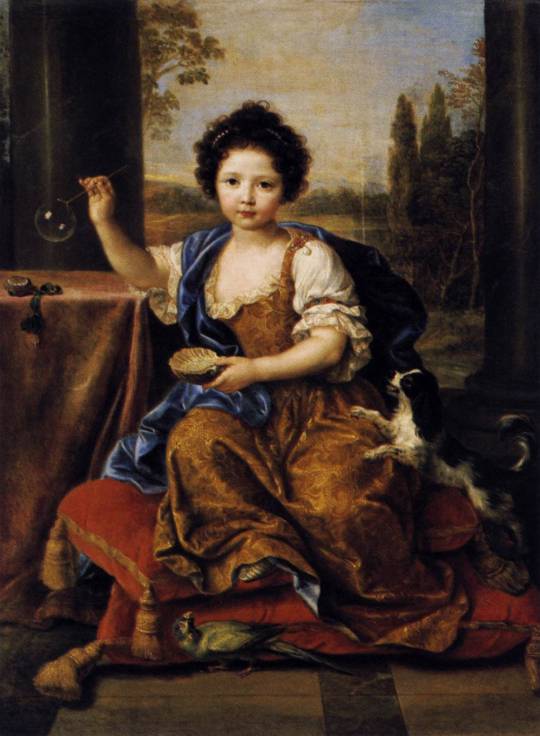
"Louise-Marie de Bourbon, dite Mademoiselle de Tours; La fillette aux bulles de savon"
By Pierre Mignard
Oil Painting, 1681.
Château de Versailles.



PORTRAIT SUBJECT
La fillette aux bulles de savon, or the commonly found English title, Girl Blowing Soap Bubbles, is a portrait of innocence during the Franco-Dutch War.
The child shown is Louise-Marie de Bourbon, the daughter of the Sun King, Louis XIV, and his Maîtresse-en-titre, Françoise-Athénaïs de Rochechouart (Madame de Montespan). I'm sorry, I don't know why they popped off with the names like that when they're planning to reuse Marie and Louis fifty times over ptdr. Louise-Marie, affectionately known as Toutou, was an illegitimate birth (1674), later legitimized by her father when she was around two years old. She held the title of Mademoiselle de Tours from then until her untimely death in 1681.
According to sources, Mignard's painting of the six-year-old girl was finished posthumously. But, her innocence is held delicately, frozen in time on canvas.

THEMES OF CHILDHOOD INNOCENCE (TL;DR: YAPANESE)
Mignard's choice to paint Louise-Marie as an actual child was uncommon for the time (even centuries later, believe it or not; maybe not so good examples, but for argument-sake: Louis XV by Hyacinthe Rigaud, Mariana Victoria of Spain by Nicolas de Largillierre, Phillip II, Duke of Orléans, Reagent of France by Largillierre, and Élisabeth Charlotte d'Orléans, "Mademoiselle de Chartres" by Largillierre -- apologies for throwing you strays, man, I'm trying to finish writing this and your children portraits were on the same website next to each other x), as young royalty are painted either as babies (unbreeched/baptize gown) or as tiny adults (fixed in uncomfortable poses and wearing clothes a monarch would), no in between. Here, Louise-Marie is playing with bubbles, her dog jumping towards it, and she looks carefree, still with chubby cheeks of rose. It doesn't help much that children were seen as heirs to the family fortune, especially during a time when parents had multiple kids due to illness (premature death) and bringing in income (need I explain more... *cough cough* coal mines... a bit anachronistic, sorry breaker boys, some other time we'll discuss y'all).
A painting such as this one, showing a realistic human experience from a royal status and that of a child BEING a child, innocence still intact, is quite important, even in today's form. We take childhood for granted, and kids are forced to grow up despite having more rights now than before. It can be a portrait to remind us that innocence is vital (a lack of childhood is detrimental as the experience is needed in order to mature mentally and emotionally when entering the teen and adult stages of life), but also that we as humans weren't so different from back then (sure, you can claim we bathe more than they do despite your husband still not washing his ass, but my heavens, did the thought 'wait, they had bubbles back then' ever occur to you?).
Genuinely, I was going to pull a La Muse Verte (the post where I briefly explained the history of absinthe) and go into the history of bubbles... because you gotta admit, that'd be fun for the both of us. However, delving into the background and theme of this painting became more heartbreaking for me. The bubble idea isn't gone, but it'll be postponed as a full history lesson post (and, yes, Mignard's painting of the immortalized Toutou will be recycled).

FURTHER READING (EXTRA SYMBOLISTIC DETAIL)
Plenty more symbolism is present, but I highly recommend you all check out L'Art en Tête's in-depth article on Mignard's beautiful portrait. I did regurgitate some of the author's points in this because I thought they were brilliant, and you can tell they have an art-history degree, so I'm begging you to go over there for more detail if interested!

#art#painting#oil painting#artwork#history#french#french art#17th century#1600s#1600s art#late 1600s#17th century art#baroque#Pierre Mignard#Château de Versailles#versailles#Royalty#French history#louis xiv#sun king#symbolism#louise-marie#mademoiselle#art history#house of bourbon#early modern period#kingdom of france
6 notes
·
View notes
Text

January 7, 2024: Welcome to 2024!
Okay, I have been writing (and there is a LOT). However, I've had to deal with bedbugs for the past six months (and going). I have no time to go into the logistics (and the blame sits squarely on the shoulders of my stepsister), but I'm here to have some fun and tell you about what is going on with the HOB.
Without too much detail of the private conflicts that plagued this project since its creation upon the heels of the success of @tkwrtrilogy2, @tkwrtrilogy, and @tkwrtrilogy3, there has been an overhaul. Also, the latest addition to the trilogy will make its debut on Wattpad (but will come here eventually).
First, the OVERHAUL: Welcome to the HOB Universe.

You're asking yourself: WTF is this? Well, the best explanation of it can be seen here. All that applies is that this takes place in 17th-century France rather than Middle Earth.
I will be overhauling the Tumblr for @lesecretdelamaisondubourbon. There is a reason, but to find that out, you'll have to read the memoir about all of this (TBA). Either way, it comes on the heels of family drama and the death of a friendship that was supposed to last forever (according to her). But, the book (known by the title XIV) is going up on Wattpad, so while it is being overhauled over here, you can read it in its proper order over there.

XIV: The life and times of Louis XIV as told by Louis XIV--if you haven't figured that out yet. It is part of Book III; his father's story (@thesecretofthehouseofbourbonbook) is Book II.
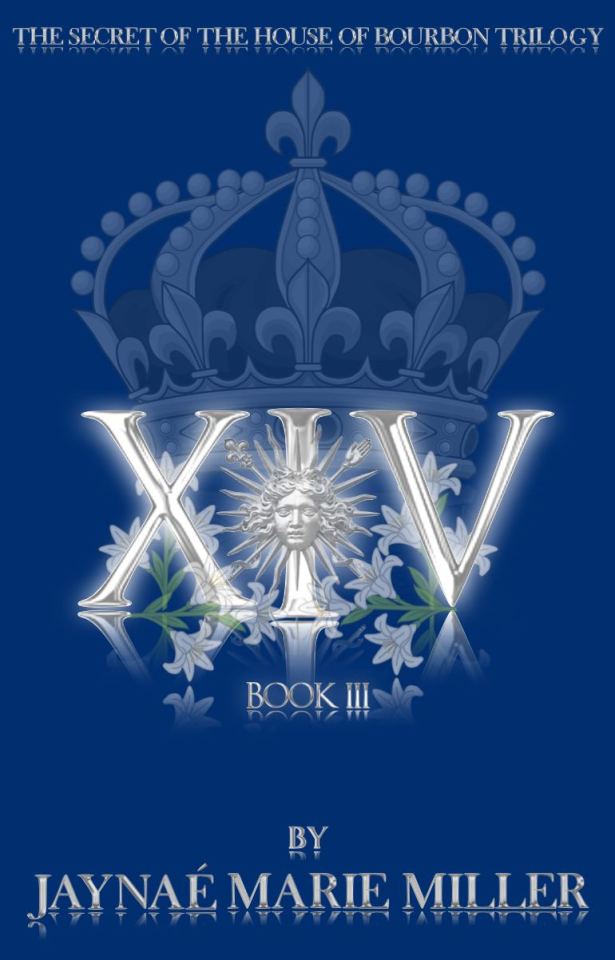
Now, about that other book: The original title of the book (that was going to be written by my former co-author) was Monsieur. If you guess that the book was going to be about Philippe I, Duc d'Orléans (younger brother of Louis XIV), you were right.
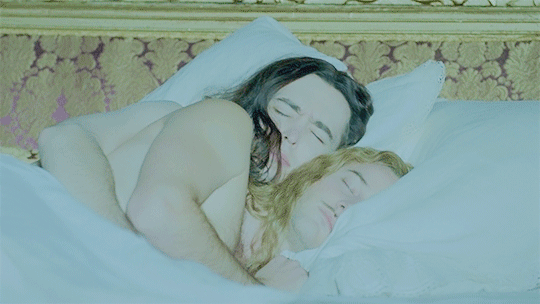
If you think this is a retelling of centuries of rumor and innuendo, you would be wrong. This will be his story--told by Philippe. Under the title of Son of France (Fils de France in French), this is the story you were never told. After 383 years, it is time.
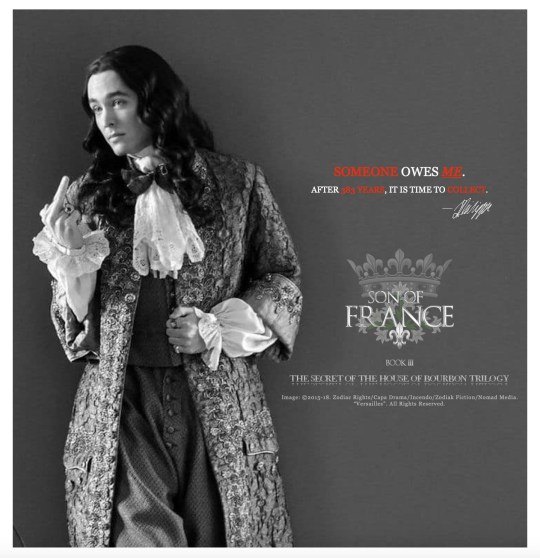

His story officially began in January of 2024, and he will be following his brother Louis here once he debuts on Wattpad. Stay tuned for more. He's part of the universe now.
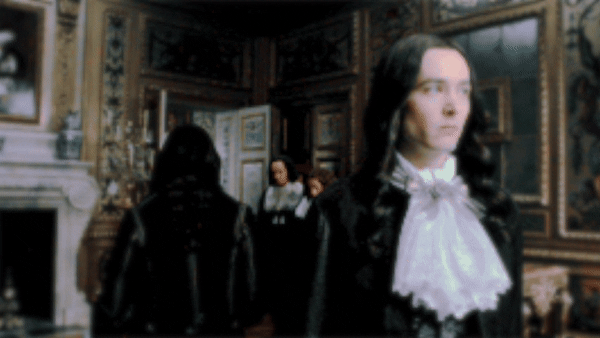
#historical drama#historical fiction#xiv#louis xiv#monsieur#philippe i#duc d'orleans#books#novels#wattpad#hobnewsfeed#the official hob#the official hob trilogy#hob literary universe#literature#writers on instagram#writers on twitter#writers on tumblr#writers on wattpad#writers on wordpress
7 notes
·
View notes
Note
For the fanfic asks - 6 and 20!
Happy New Year 💜
Hi, dear! Happy new year to us all <3
Fanfic asks for the new year
6. Which yet-to-be-started fic is first on your list?
Probably one of the two new chapters I mentioned in my last answer (whichever one strikes my inspiration first).
20. Any plans to work on original fiction this year?
It depends on what people consider to be original fiction. I want to write a novel about the events of 1483-85 through the eyes of Margaret Beaufort, Henry Tudor and Elizabeth of York (the three people imo who made Henry VII's ascension possible—including himself of course lol). It's mostly a wish born out of frustration after reading too many novels where Elizabeth of York blames her mother for everything instead of being her partner and where Henry Tudor does fuck-all despite the extremely interesting political scenario of France and Brittany at that time. I would LOVE to have Henry in awkward situations standing between Anne de France/Beaujeu and their cousin Louis d'Orléans as they're fight for the regency. I would love to have Henry navigate the extreme conspiracies going on in Brittany whilst Duke François was ill, all of that as Henry tried to get support to his own cause. I would also love to depict the beginning of his relationships with Giles Daubeney, Thomas Lovell, (later bishop) Richard Foxe and (later cardinal) John Morton. He made some long lasting and trusted friendships during that time and it's never portrayed in fiction, which is a pity. I'm getting too carried away lol I can talk more about it later if you want.
But if people don't like to include historical fiction in the 'original fiction' category, then I do have plans for writing original characters but I don't plan on doing that this year, no.
Thank you so much for the ask 🤍x
7 notes
·
View notes
Note
So, as someone who does not have any French or Canadian heritage, what exactly is Cartouche? I haven't heard of it before, but it seems like there's a show and books and stuff, is it fairly popular among french-speaking communities? You've made me curious lol
Ngl i went "nyehehehehehe" out loud when i found out i was being given an excuse to ramble about the thing :D
The short answer is it's a french cartoon from the early 2000s! One season-long, with 26 episodes! And yeah in 2010 they eventually made little books that are based on some eps, and they are very cute! They all have unique artwork because instead of using screenshots from the show they hired an artist to illustrate everything.
Most of the show is sort-of lost media, by which i mean that there are only 5 episodes still available in the original french audio… BUT an arabic dub exists, so I've been going through that with a translation app for funsies in my free time! So to answer your question, no, it's not a well-known show, but to me it's a nostalgic one asfdkg
More rambling about the thing under the cut!
What it's about:
Think Robin Hood in the early 1700s, but in Paris! Specifically, it takes place 2-3 years after Louis XIV's death : the future king is a tiny 7yo kid, and since he can't reign yet, the old king's nephew, Philippe II d'Orléans, is regent. In real life, the regency lasted 8 years, and Philippe d'Orléans is generally now considered by historians to have been An Okay Guy Who Did His Best, but every show needs a villain, so here he's the Prince John to Cartouche's Robin Hood! So the bulk of the show is Cartouche and his lil group of buddies helping out poor people and fighting for justice.
I was always fond of the show, but ngl part of the fun in recent months has been reading up on the time period; it's a unique but very short transition era between two very long reigns, and a lot of stuff actually happened during it! The show has a fun amount of references to real people and events here and there. Makes reading all those History books feel like the Pepe Silvia meme, really
Who are these characters:

Our main character is this dude! Cartouche is your brave hero archetype, but also a bit of a smartass with a penchant for shenanigans. And he's named after a real-life criminal! The actual Cartouche was notably Not Nice, but a lot of people at the time did cheer him on because, well, he stole from and attacked rich people. There are actual books and movies about him that did generally keep the bandit-with-a-heart-of-gold legend alive! Cartoon!Cartouche is even designed after one of the movie versions, where he was played by actor Jean-Paul Belmondo. He's got the same outfit and everything, it's cute :D
Real!Cartouche had his own group of allies called the Cartouchiens, and some of the characters from the show are named after them! The main ones are…

Louis du Châtelet, aka le Lorrain, he's a noble who decided to join the good guys! He's a fancy dude, and notably he used to be a massive jerk, but he got better!

Fleur d'Épine and Galichon! Galichon was sentenced to the galleys and escaped! He's the team dad… and is also Fleur d'Épine's actual adoptive dad. Fleur d'Épine is the youngest of the group and has a whole backstory the show takes time to uncover: she was found by Galichon when she was just a baby! She gets a bunch of episodes about her mysterious family situation...

Freluquet, who is, let's be real, the token kid they added for the show. But he's generally a fun little dude, and very importantly he often relays messages from...

Isabelle d'Entraigues, Philippe d'Orléans's niece! She's not named after a real person, but after a character in the Belmondo Cartouche movie. She's a fave, she's got a temper! She's a spy from the good guys.
And then we have our main villains!

Philippe d'Orléans, the Regent. He's cruel and power-hungry and not above trying to get rid of the young king.But of course, he's not going to get his hands dirty. (The real guy is super interesting! I've been reading up on him a lot!) He has two people doing work for him:
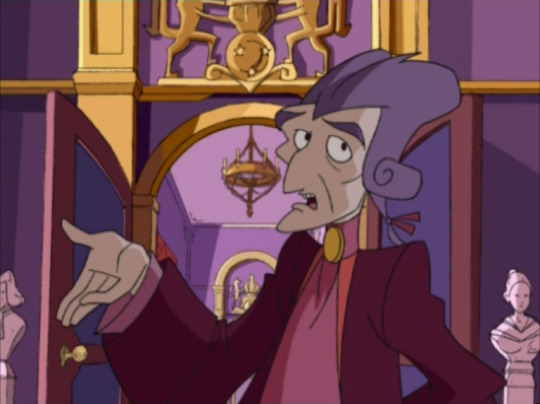
Demachault, the police lieutenant, who is named after a real guy and is doing his best but honestly just sucks at this job, poor guy.

Nero Falconi, who is the Regent's right-hand man. He's the competent one here, but unlike our other villains he's not a noble!! His sad backstory ties with le Lorrain's, but instead of acting angsty about it, he's just seething with rage at all times. I Just Think He's Neat <3 He's the one main character who isn't named after a real person or a movie character!
There are other characters, but these are the main ones! It's a cute show! The references and links to real events are fun to spot, the setting is neat :D
Also Falconi's sad backstory lives in my brain rent-free, despite the flashback being only 60 seconds long. I can't justify that one, it's not that deep, it's just been occupying space in my brain for almost 20 years for some reason
#cartouche prince des faubourgs#characters i didnt mention who are also neat: Isaac de Tolède who is a doctor and also a lil science nerd! he's cute!!#Chien Noir who is the chief of another group of bandits but he's not nice#Mordoc and Brutus who are the two big scary guys who work for Falconi sometimes. they're twins!#la Veuve Richard who is the lady owner of the inn where the Cartouchiens live#learning that Demachault in particular was named after a real dude was A Good Time#bc he so feels like a goofy guy the showrunners would've come up with. but no. he was an actual person
12 notes
·
View notes